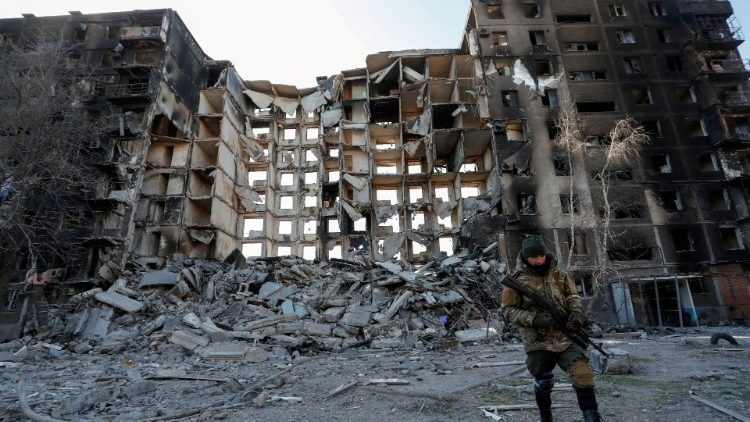In a stunning display of audacious propaganda, a group of Russian dissident fighters returned to Ukraine from a raid in their home country, proudly showcasing a captured Russian armored vehicle as their trophy. However, their attempt to adhere to the official explanation provided by Kyiv quickly fell apart, shedding light on a more complex and intricate web of involvement. Ukrainian officials claim that the fighters acted independently, racing across the Russian border and conducting a two-day raid in the Belgorod region, which was extensively documented on social media. However, evidence suggests a different narrative.
The fighters in question belong to the Freedom for Russia Legion and the Russian Volunteer Corps, both composed of Russian citizens fighting against their homeland in Ukraine. Astoundingly, these groups operate under the command of Ukrainian security forces, raising questions about the extent of Ukrainian involvement in the raid. When asked about their actions, Dennis Nikitin, leader of the far-right Russian Volunteer Corps, initially maintained that their decisions were entirely their own. However, he later admitted to seeking encouragement, assistance, and planning input from their Ukrainian counterparts.

While the dissident fighters’ statements may not have included a stage wink, their acknowledgment of Ukrainian involvement was unmistakable. Caesar, the spokesperson for the more moderate anti-Putin Freedom for Russia Legion, also hinted at a connection with the United States. When asked about the use of US-made MRAP armored vehicles, Caesar slyly referred to purchasing equipment from international “war shops,” alluding to a long-standing Russian propaganda tactic that denies Moscow’s direct involvement in conflicts by suggesting that rebels acquire Russian vehicles through open markets.
The revelation of US vehicles being used in the raid has drawn some attention in Washington. The Pentagon’s Press Secretary, Air Force Brig. Gen. Patrick Ryder, stressed that the US government had not authorized any transfer of equipment to paramilitary organizations outside the Ukrainian Armed Forces. The West has consistently urged Ukraine to refrain from using foreign weapons inside Russia, as such actions could risk escalating the conflict and dragging NATO into a direct confrontation with Moscow.
Despite distancing themselves publicly from the raid, Ukraine stands to benefit from its outcome. By employing Russian dissidents and claiming they operated independently, Kyiv achieved its desired goal of destabilizing Russia. The raid has already become ammunition for critics of the Kremlin, including Yevgeny Prigozhin, the leader of the Wagner mercenary company, which has been fighting alongside Russia’s military in Ukraine. Prigozhin seized on the raid as evidence of military incompetence and warned that continued struggles could provoke popular uprisings akin to the 1917 revolution.
While it is unlikely that the offspring of Moscow’s elite will rush to enlist in either the armed forces or Prigozhin’s mercenary groups, chaos within the ranks of the Russian military aligns with the doctrine of General Valery Gerazimov. According to this doctrine, chaos among the enemy is tantamount to victory. Caesar, speaking from his undisclosed location in Russia, confidently asserted that the raid had rattled Moscow, highlighting the slow and inadequate response from Russian forces defending Belgorod.
Caesar emphasized that the raid was just the beginning—a reconnaissance mission to test Russian defenses. The destruction of a mechanized company and the heavy casualties inflicted demonstrate the dissident fighters’ determination to challenge the Russian military. As tensions escalate and questions of involvement persist, it remains to be seen how this audacious raid will shape the broader dynamics of the Ukrainian-Russian conflict and the geopolitical landscape in the region.
In conclusion, the Ukrainian-Russian dissident raid has exposed the intricate web of involvement, challenging the official narrative of independent action. With Russian dissidents operating under Ukrainian command and the potential use of US-made vehicles, tensions rise and questions linger. As Ukraine distances itself from the raid while reaping its destabilizing effects, the dynamics of the conflict between Ukraine and Russia continue to evolve, potentially shaping the future of the region.
©world-news.biz
